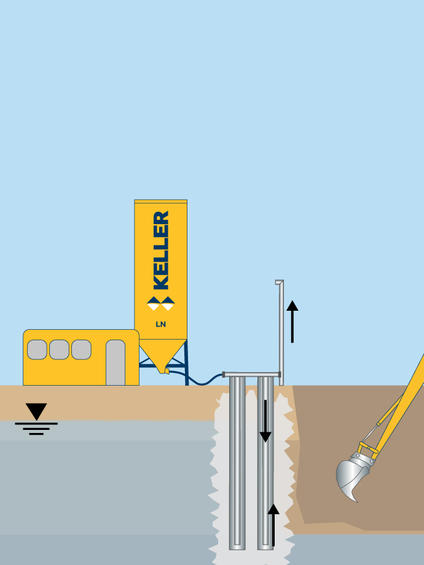Artificial ground freezing converts in situ pore water to ice through the circulation of a chilled liquid via a system of small-diameter pipes placed in drilled holes.

Common uses
Process
Artificial ground freezing for groundwater control and excavation support was developed over a century ago. It is cost-effective in a relatively well-defined niche where both support of excavation and groundwater cut-off is required, and it is performed at significant depth or in difficult, disturbed, or sensitive ground.
The ground freezing process converts in situ pore water to ice through the circulation of a chilled liquid via a system of small-diameter pipes placed in drilled holes. The ice fuses the soil or rock particles, creating a frozen mass of improved compressive strength and impermeability. Brine is the typical cooling agent. However, fast-acting liquid nitrogen can be used for projects where the freeze only needs to be quickly established and maintained for a short period or in emergencies.
Specialist contacts
Joe Sopko | Director, Ground Freezing | 973-453-4214
Paul Schmall | Vice President | 973-400-3631